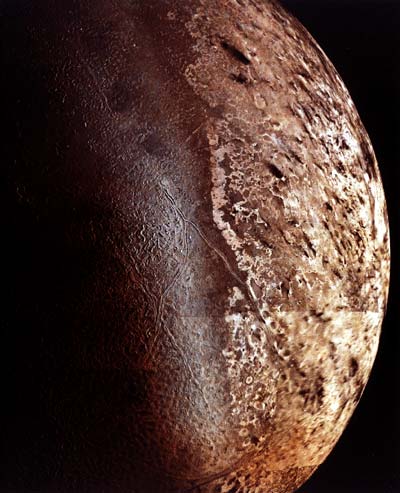Triton: Neptune's Largest Moon

Explanation:
One hundred and fifty three years ago, on October 10th, 1846,
William Lassell
was observing the newly discovered planet
Neptune.
He was attempting to confirm his observation, made just the previous week,
that
Neptune had a ring.
But this time he discovered
that Neptune had a satellite as well.
Lassell soon proved that the ring was a product of his new
telescope's distortion, but the satellite
Triton
remained.
The
above picture of
Triton
was taken in 1989 by the only spacecraft ever to pass
Triton:
Voyager 2.
Voyager 2 found
fascinating terrain,
a thin atmosphere, and even evidence for
ice volcanoes
on this world of peculiar orbit and spin.
Ironically, Voyager 2 also confirmed the existence of
complete thin rings around Neptune
- but these would have been quite invisible to Lassell!
Authors & editors:
Robert Nemiroff
(MTU) &
Jerry Bonnell
(USRA)
NASA Web Site Statements, Warnings,
and Disclaimers
NASA Official: Jay Norris.
Specific
rights apply.
A service of:
LHEA at
NASA /
GSFC
& Michigan Tech. U.

